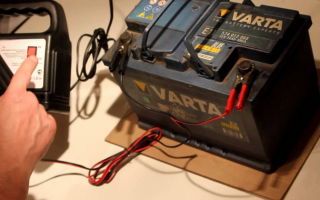Charging a maintenance-free car battery at home: detailed instructions
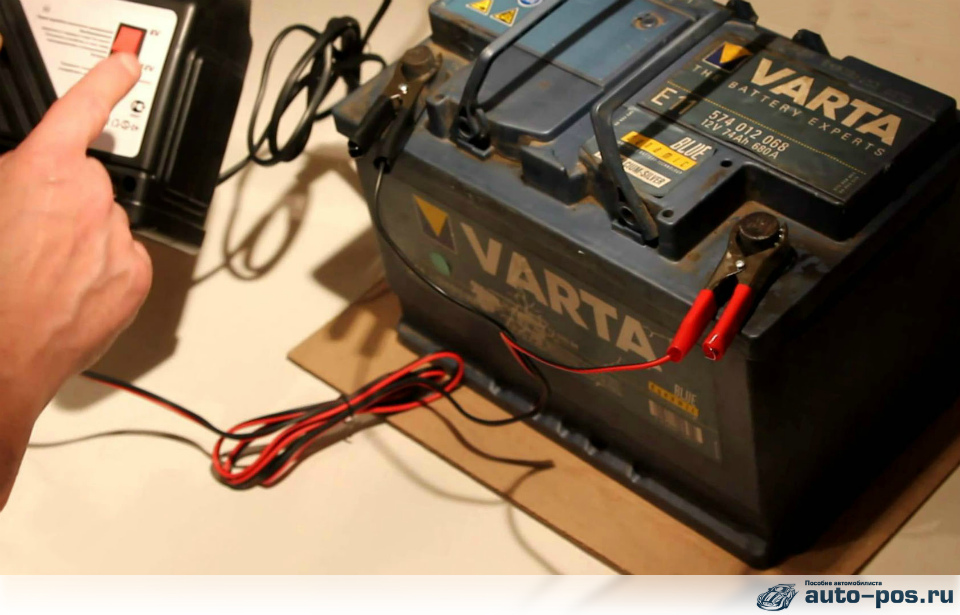

In pursuit of optimizing the maintenance of cars in general, and batteries in particular, developers have released maintenance-free batteries.
Their introduction was intended to make life easier for motorists, but it only raised a lot of new questions that car owners had not encountered before. Charging such a battery is also different from the already familiar charging of a lead battery.
Advantages and disadvantages
The main feature of maintenance-free batteries is that it is impossible to fill them with distilled water. And in some types of maintenance-free batteries there is no electrolytic fluid at all in the usual sense. The electrolyte in such batteries is contained in woven polypropylene.
There are also gel batteries in which the electrolyte mixed with silicon oxide powder takes the form of a gel and fills the entire space inside the battery.
Interesting! Lead-potassium batteries were the first in the line of maintenance-free batteries. Without adding water, they could faithfully serve the owner for about two years.
The problem was that their characteristics suffered greatly when completely discharged and, with severe use, their service life was significantly reduced. Lead-potassium current leads increased the battery life to 5 years.
Along with its advantages, maintenance-free batteries also have disadvantages:
- Price. It is significantly higher than that of serviced batteries. Dependence on temperature.
- Cold has an extremely negative impact on the performance and service life of maintenance-free batteries. If you leave your car outside the window on a frosty evening, you run the risk of walking to work in the morning.
- Faulty electrical equipment takes a toll on your battery.
Is it possible to charge at home?
Novice car enthusiasts often ask the question “can I charge the battery at home?” This is possible, and sometimes it is simply necessary. Charging from a special charger is more gentle than trying to “overclock the battery” from a generator.
This issue is especially relevant in winter. With the onset of cold weather, the lubricant in the engine becomes thicker, it is more difficult for the starter to spin it; this requires more energy and requires more starting current.
And if all summer you drove on a half-charged, maintenance-free battery and did not experience any difficulties, then in the winter, after a couple of unsuccessful attempts to start the car, the starter will stop working.
Important! 1 00% charge of a maintenance-free battery is a necessity in winter. This can only be achieved by regularly charging your battery.
How to charge a maintenance-free battery?
In order to charge a maintenance-free battery at home, you will need a charger. You can purchase it at any car dealership. When choosing, pay attention to the following:
- The charger must provide an output voltage suitable for your vehicle. For passenger cars it is most often 12 V.
- With a voltage output of 12 V, the charger should provide a current of at least 10% of the capacity of your battery.
- If your car regularly travels in the winter, it makes sense to consider starting chargers.
- The charger must be designed to operate in both warm and cold environments. This parameter is especially relevant in the realities of the Russian winter.
- For novice car enthusiasts, devices with automatic control are suitable. Drivers with extensive experience can choose a charger with the possibility of manual settings
A properly selected charger for your needs is already half the solution to the problem.
The main difficulty with charging is that it is impossible to measure the density of the electrolyte and you have to focus on the level of residual voltage and the conditions that led to the discharge.
Important! A maintenance-free battery needs to be charged regularly; recharging such a battery with a car generator is not enough.
If your battery is only partially discharged, then you should charge it in continuous voltage mode. In this case, the current strength will gradually decrease.
The charger should supply the battery terminals with a voltage of 14-14.5 V and a current of about 23-25 A.
Charging a maintenance-free car battery takes approximately 3 hours. During this time, the current will drop to 0.2 A and the battery will become ready for use.
Some experts recommend choosing a different charging method. It is as follows: the charger supplies a constant current, while the voltage changes. The disadvantage of this method is that the current level must be checked and adjusted regularly.
What to do if the battery is completely dead?
First, you'll have to wait. Charging a completely dead battery takes about a day, with a current equal to 1/10 of the battery capacity. In this case, it is necessary to carefully monitor the process. This is due to the fact that upon completion of the charging process, gas begins to form on the plates.
For this reason, the entire electrolyte can be transformed into gas. And since there are no holes on such batteries, an explosion may occur. When charging is complete, the voltage at the terminals should be 12 V.
A maintenance-free battery can be charged either by removing it from the car or in the car itself by simply disconnecting it. On the one hand, it is much more convenient. But if you need to fully charge the battery, then you should not charge it in the car. Since access to the battery will be limited and monitoring the process will become quite problematic.
In any case, charging should only take place in a warm environment. If you decide to charge the battery directly in the car, do not do it outside. It is better to use a warm box or garage.
- The removed battery can be installed at home, but subject to certain conditions.
- The battery must be placed on a stable surface to prevent falls and tipping over.
- The charger should be easy and quick to unplug if necessary.
- Access for children and animals to the battery and charger must be limited.
Remember that the correct approach to charging a maintenance-free battery will extend its life and save you from unforeseen situations.
Source: http://ilovekiario.ru/autosovet/kak-zaryadit-neobsluzhivaemyj-akkumulyator.html
How to properly charge a car battery, incl. unattended
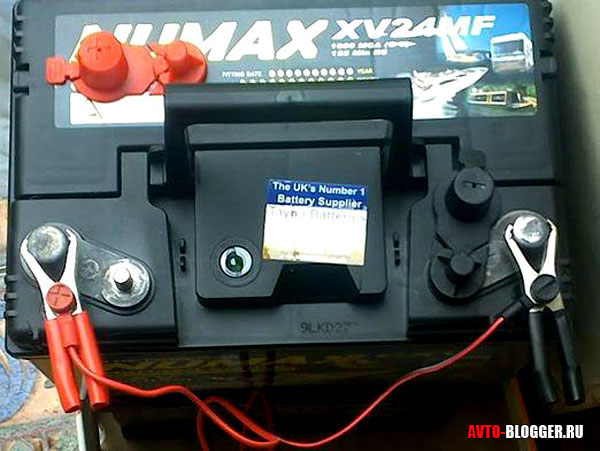 How to properly charge a car battery
How to properly charge a car battery
During the operation of the vehicle, the battery is constantly recharged by the generator current. But its power, and often travel time, is not enough to restore the battery capacity to 100%.
Therefore, experts recommend periodically (once a month) charging a car battery from a stationary device. Even when purchasing a new battery, it is recommended to activate it with a charger, because...
While in the warehouse and during transportation, the battery capacity becomes smaller every day.
To properly charge a car battery, you must have the following devices and accessories:
- Charger,
- load fork,
- hydrometer (for serviced power supplies).
The load plug allows you to determine the operating voltage of the battery, which is measured under load. Using a hydrometer, it is easy to find out the degree of charge of the battery by the density of the electrolyte in each jar. A fully charged battery has a density of 1.27 g/cm3 and a voltage of 12.7 V. With a 50% discharge, the density drops to 1.21 g/cm3 and the voltage drops to 12.3 V.
Chargers are manufactured with both automatic and manual adjustment. It’s easier to use “automatic machines” that themselves select the required modes (voltage and current), and after reaching the full battery capacity, turn off the device. If you have to charge the battery with a manually operated device, then the car owner needs to know several important points.
How to properly charge a serviced battery
Car battery charging time indicator.
There are two ways to charge a car battery:
- charging at constant current,
- charging at a constant voltage.
The first charging method is to supply the battery with a direct current of 10-12% of the battery capacity. For example, a battery with a capacity of 77 A/h requires a current of 7.7-9.2 A. A full charge will take 10-12 hours.
With the second method, a constant voltage of 14-15 V is set on the device. It may take several days to charge the battery to 100%.
The degree of charge of the battery is determined by a hydrometer by its density, which must be constant for 3 hours.
To charge a lead acid battery, you can use different methods.
First you need to open the holes of all cans, visually check the electrolyte level (if necessary, add distilled water), connect the charger, observing the polarity.
The wire with a positive charge is connected to the positive terminal, and the wire with a negative charge is connected to the negative terminal of the battery. Next, the required current or voltage is set, and the process continues until the battery is fully charged.
To charge an alkaline battery, follow the following procedure. First, preparatory operations are performed, as in the case of acid batteries. Charging should begin by setting the voltage from 1.4 to 1.45 V, and the process should be completed with a voltage value from 1.75 to 1.85 V.
To charge an alkaline battery, three modes are used:
- normal,
- accelerated,
- reinforced.
The difference lies in the duration of the charging operation. In normal mode, the battery charges in 6 hours. The enhanced mode takes twice as long. And fast charging requires 2.4 hours at double amperage, and 2 hours at rated amperage.
The charge-discharge system has a positive effect on restoring the capacity of alkaline batteries. But setting a very low current can have a detrimental effect on the battery. It is important to ensure that the electrolyte temperature does not exceed 45ºС.
Charging a maintenance-free car battery
Maintenance-free models do not have accessible holes for adding electrolyte or distilled water. Therefore, when restoring the battery capacity, overcharging should not be allowed so that the water does not “boil away”. To ensure normal charging, the voltage at the battery terminals should not exceed 15.5 V.
Depending on the degree of discharge of a maintenance-free battery, different tactics for restoring capacity are used. The main characteristic of charging is the voltage, and the current only allows you to evaluate the progress of the process.
- When the battery is deeply discharged, a reduced voltage (12-13 V) is immediately applied. In this case, you need to ensure that the current strength does not rise above 1/20 of the capacitance value. If this indicator exceeds the permissible norm, it is necessary to further reduce the voltage. Gradually, the current will increase and the density of the electrolyte will increase. When the current reaches 1/10 of the battery capacity, you can proceed to the standard charging process at 14.4 V.
- During a “normal” battery discharge, a voltage of 14.4 V is immediately applied to the terminals. As the capacity increases, the current strength will decrease to 0.2 A. It is impossible to recharge the battery in this way.
If the battery boils while charging
There are several reasons why a battery may boil during charging.
- The boiling of the electrolyte indicates the end of the process, electrolysis of water begins and gas is released. It is necessary to reduce the current to eliminate gas formation.
- Active gas evolution is observed during forced charging with high current. When the temperature reaches 45ºС, the process must be stopped.
- Battery malfunction (sulfation of plates, low electrolyte level, short circuit in one of the cans). The battery should be taken to a battery specialist.
The battery is the most important element of a modern car. To extend its service life, the car enthusiast should pay a little attention to it. Keep the battery clean, periodically clean the terminals from oxides, and charge regularly with a stationary power source. Then you won’t have to stand with the hood open and ask drivers for help.
I would be grateful if you share this article on social networks or write a comment:
Source: http://JustCarz.ru/autoparts/138-Zaryadka-akkumulyatora.html
How to maintain and charge a maintenance-free car battery?
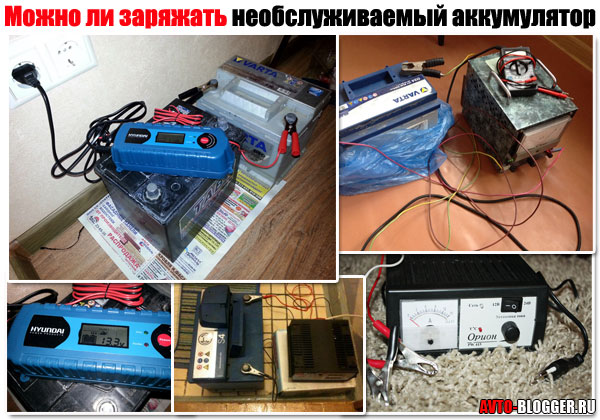
A maintenance-free type battery differs from a maintenance-free classic acid power source solely in its design.
The thing is that it is impossible to add distilled water or electrolyte to such a battery, since it functions completely autonomously without any maintenance.
But, most vehicle owners who have purchased a maintenance-free energy source are interested in the question: can it be charged, and if so, how to properly charge a maintenance-free battery?
Does a maintenance free battery require charging or not?
In any case, the battery needs periodic charging, because regardless of its type, that is what it is designed for (acquiring and releasing charge).
To begin with, it is worth remembering the principle of output and consumption of electrical energy in the vehicle’s on-board network. To start the power unit, energy from the power source is required, which is supplied to the starter and the fuel mixture ignition system. After the engine is started, the generator is turned on, which generates the necessary energy to ensure the battery charging process.
No matter what type of battery is installed on the vehicle, you need to understand that it still requires recharging to replenish the energy spent on starting the power unit. Moreover, if you completely discharge a maintenance-free lead battery several times, it will simply fail. That is why it is impossible to do without constant battery recharging.
What is the essence of the problem?
If recharging the battery from a car generator is normal, then, in the opinion of most motorists, restoring the battery capacity using a stationary charger is extremely detrimental to it.
Why do many people think this way:
- — It is impossible to see when the electrolyte has boiled, since the jars of a maintenance-free power source are hermetically sealed, and it is impossible to track what processes are occurring in them. Since the battery is completely sealed, this point is very alarming for car owners when charging the battery, since when the electrolyte boils, its vapors will not be able to leave the battery case, as a result of which it can simply explode from the resulting pressure.
- — There is no possibility of density control. For example, if in a serviced type of battery it is quite simple to measure it: just unscrew the plugs and put a hydrometer in the battery jars, then in an unmaintained type it will no longer be possible to do this.
Based on the points described above, it is necessary to draw up a detailed algorithm for charging a maintenance-free power source in order to understand what subtleties and nuances should be taken into account in this process.
Features of the charging process in a maintenance-free power source
Note that no primitive methods, homemade chargers or the “I’ll leave it to charge overnight” principle are suitable for its implementation. There are two real ways to restore the capacity of a maintenance-free battery:
- Charging at constant voltage. Its process proceeds with a predetermined voltage value, for example 14V, and the current constantly changes automatically. At the beginning of the process, the charging current can reach 8-10 A, and at the end - 0.1-0.4 A.
- Charging at constant current. It differs from the first method only in that the voltage changes here, but the charging current does not change throughout the entire process.
All power sources are charged in this way.
How long does it take to charge?
The question is the most interesting. Naturally, it is necessary to clearly calculate the time required to charge the battery. To do this correctly, you should know how low the battery is. To do this, you need to learn how to calculate its capacity. Let's describe how to do this.
It is known that 12.7V is the value of the full charge of the power source, and if the battery is completely discharged, its voltage will not exceed the threshold of 11.7V. Note that 10V is a critical figure for the charge of the power source, which should not be allowed. There is a difference of 10% between the values of full charge and discharge of the battery, and it is 1V.
Let's consider the concept of power supply capacity. Often it is 55-60-75 A/h, and then increasing. This concept characterizes the amount of current that the power source can deliver for 60 minutes. If a battery with a capacity of 60 A/h is only half charged, its capacity in this one is only 30 A/h.
In order to completely restore the entire capacity of the battery, a charging current of a certain strength must be applied to its terminals. Some believe that in order to replenish half the capacity of the battery described in the example, it will be necessary to supply it with a charging current of 30A.
However, this will completely destroy the power supply. It must be charged by applying a charging current, the value of which does not exceed 10% of the battery capacity. That is, our battery requires a charging current of 6A. Now you need to determine the charging time.
Since 30A is required to fully replenish the battery capacity, while the charging current is 6A, this follows a simple formula - 30/6=5. That is, it will take 5 hours to restore the capacity of the power source.
Using automatic chargers
Their use is most justified, since there is no need to calculate the battery capacity, current value and charging time, etc. The automatic charger will do everything itself. For example, at the beginning of charging, the current supplied to the battery will have a maximum permissible value, which will begin to decrease over time.
A maintenance-free battery will never boil because the system constantly monitors and reduces the charging current.
How bad is recharging?
The process of recharging any power source is accompanied by the mandatory boiling of the electrolyte inside it. This causes the formation of gas and an increase in pressure, which can cause the battery to simply explode.
Maintenance-free batteries have a special valve that opens in this case.
And although the battery case will remain intact, overcharging will still harm such a battery, since the electrolyte will evaporate from it, and it will no longer be possible to replenish its quantity.
Manufacturers have made it easier for users to charge maintenance-free power supplies by placing a special indicator on their body. Its color indicates the different states of the battery. For example, green indicates that the battery is fully charged, while black indicates the need to replenish its capacity.
How safe is it to charge a maintenance-free battery at home?
Yes, a serviced battery cannot be charged at home, since this process is always accompanied by the formation of a caustic gas. With a maintenance-free type of power supply, things are simpler.
The main thing is not to recharge them for a long time, but otherwise the charging process is quite safe even in an apartment.
It is enough to turn off the charger as soon as the indicator lights up green, and you don’t have to wait the full time to charge the battery.
Source: https://avtobrands.ru/kak-obsluzhivat-i-zaryazhat-neobsluzhivaemyj-tip-akb-dlya-avtomobilej/
How to properly charge maintenance-free car batteries?
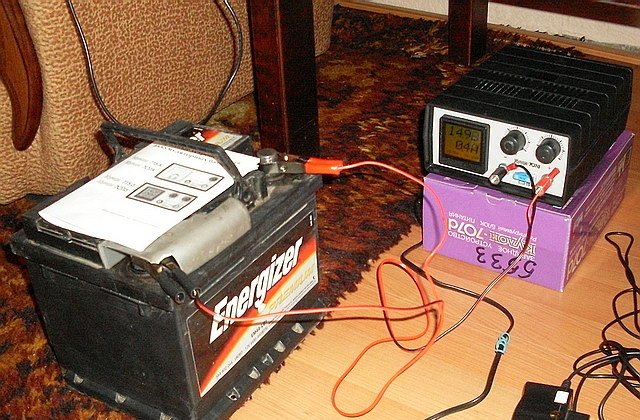
Home » Battery » How to properly charge maintenance-free car batteries?
What does a maintenance-free battery mean, what is the service life of such devices and can such batteries be charged? First, let's figure out what it is.
The fundamental difference between maintenance-free devices is that they allow you to work much longer without the need to add an electrolyte solution to the jars.
Unlike serviced devices, distilled water practically does not evaporate in unserviced devices, that is, their electrolyte consumption is very low. Thanks to this, there are no holes for cans in the design of the device.
Since there are no technological holes, the battery cover itself is soldered to the body without the possibility of further removal. Ultimately, this became the reason that this type of battery became more difficult to maintain, in particular when it comes to charging.
Accordingly, the owners of such devices cannot monitor and check the level of distillate in the jars. If boiling off of the electrolyte does occur, the service life of the device will decrease due to the inability to add liquid.
What are the disadvantages of maintenance-free batteries:
- when compared with serviced devices, their cost is higher;
- extreme cold and low negative temperatures actually have a significant impact on the functionality and service life of batteries;
- If the car uses faulty energy consumers, then such a battery can fail much faster.
But despite these disadvantages, this type of battery has a whole list of advantages, otherwise maintenance-free devices would never have become so popular among domestic consumers:
- the device can work in absolutely any position, tilted, etc.;
- maintenance-free batteries make it possible to provide a higher starting current;
- As for maintenance, in this case we are only talking about periodic charging of the device;
- if you comply with all the requirements and rules of use, the battery life will be longer (the author of the video is the Battery Manager channel).
Varieties
Let's briefly consider the main types of maintenance-free devices:
- Calcium batteries. In such devices, lead-calcium alloys, aluminum and other elements are used in manufacturing.
- Lead acid devices. The main components in this case are lead; the plates located inside are made from it.
- Nickel-cadmium. The working fluid solution in such batteries is based on potassium, as well as lithium monohydrate.
- Hybrid devices. These batteries also use calcium, the purpose of which is to provide a negative type of electrode. In addition, lead with a small addition of antimony can be used - this makes it possible to obtain positive electrodes.
Photo gallery “Battery malfunctions”
Charging the battery with your own hands: is it possible?
So, is it possible to charge a car battery with a charger? As mentioned above, the charging process is one of the features of maintenance-free devices, but in general it is not an entirely simple task.
https://www.youtube.com/watch?v=VtO7sVfU7ck
In order to correctly perform this procedure and not “kill” the battery during operation, you need to observe certain nuances and features of this process:
- When starting the engine in cold weather, make sure that the starter does not crank for more than 15 seconds.
- If you were unable to start the engine at first, it is recommended to wait 2-3 minutes before attempting to start again. This will allow, albeit slightly, to replenish the battery charge.
- To facilitate the functioning of the starter mechanism, it is necessary to depress the clutch pedal when starting the engine (video published by the VETAL CHE channel).
Detailed charging guide
In principle, the discharge process is considered normal for all batteries, whether it is a maintenance-free device or a serviced one. To properly charge the device using the device, you need to use the full or partial charge method.
To choose one method or another, it is necessary to take into account the basic technical characteristics and features of the batteries being used.
In particular, this refers to its voltage, the degree of oxidation of the terminals, as well as the density of the electrolytic solution.
How to properly perform the charging procedure:
- If you decide to use the partial charge method, you will need an appropriate charging device.
The device you use must be able to provide a continuous supply of voltage to the battery; you need to take into account that the procedure will be more effective if you configure the charger correctly. In particular, the voltage at the charging output must be set to 13.9-14 volts. As for the current strength, this value should be 25 A. When setting such settings, the battery will need to be charged for at least 3 hours. When the recovery procedure is completed, you will need to remove the entire configured configuration. - Another method is to fully charge.
In practice, this method is considered more labor-intensive in terms of execution, and it will also take much more time to implement. In order for the battery to restore its functionality, charging must be carried out for at least a day, but you also need to take into account the main features of the device, namely its capacity. To complete the task using this method, you will also need a charger; in this case, the current must be set so that it corresponds to 10% of the total capacity. It should be noted that during charging, the car owner must monitor the process, this is mandatory. In theory, long-term charging can lead to the formation of gas on the battery plates; accordingly, this will lead to the electrolyte solution taking on a gaseous state. In serviceable batteries, this problem can be solved by opening the cans, but since in our case there are no cans, there is a possibility that an explosion may occur due to the formation of gas. After the process is completed, you will need to diagnose the voltage at the terminals. If everything is done correctly, this parameter will be about 12 volts.
Loading …
Video “Which battery is better to choose - serviced or maintenance-free?”
After watching a video describing serviceable and maintenance-free batteries, you can draw a conclusion about what type of device is best to use (the video was filmed by the Battery Manager channel).
Do you have any questions? Specialists and readers of the AVTOKLEMA website will help you ask a question
Source: https://avtoklema.com/akkymylyator/neobsluzhivaemye-avtomobilnye-akb-3526/
How to charge a maintenance-free car battery?
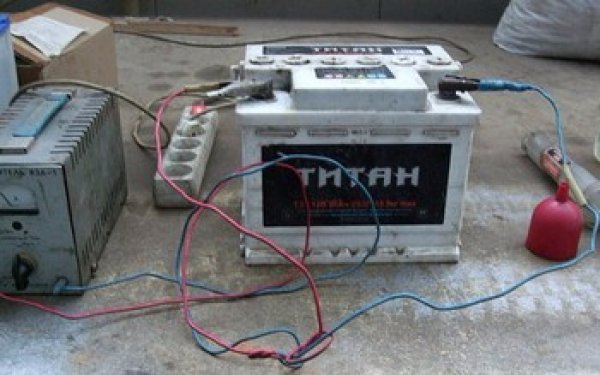
At this time, only maintenance-free batteries can be seen in modern cars. In the process of promotion, manufacturers believe that the battery does not need so much attention and care.
But at the same time, motorists who use batteries of this type often ask the question: “How to charge a car battery that is not maintained?”
The charger for a maintenance-free battery has significant differences compared to a conventional lead battery. From a technological point of view, there are several types of batteries.
liquid electrolyte batteries for consideration They are almost the same as traditional ones, the only difference is the material from which they are made and the sealed holes into which distilled water is added.
Let's consider another type - gel batteries, in which electrolytes and silicon oxide (in powder form) do not interact with each other in any way. In such a battery, the battery is filled with a special gel, which is placed throughout the entire space of the device.
Typology of maintenance-free rechargeable batteries (AB)
The oldest maintenance-free batteries are lead-calcium batteries. The electrolyte level decreases very, very slowly, due to which there was no need to add distilled water to them even after two years of operation. In general, this battery will last you a long time.
Moreover, later down conductors began to be used, reducing the level of critical response to discharge. Now they will serve a term of five years, or even more.
Some car enthusiasts ask: “Is it possible to charge a maintenance-free battery? How to charge a car battery that is not maintained? Of course you can. By the way, they take a charge even when they are simply installed in the car.
It’s just that if you charge them with a device specifically designed for this purpose, the process will be less harmful to the battery. And in the case of some types of charging, a charger is simply a must.
By the time winter arrives, temperatures below zero make the engine lubricant much thicker than initially. To spin it up, the starter requires significantly more current. If in the warm season you only had half the battery charge, then in winter you won’t even be able to start it, since the starter will stop working because its charge level does not reach 100%.
How to charge a maintenance-free battery?
I want to tell you about how to charge a maintenance-free battery. This must be done with special care and precaution. Since it is impossible to measure the density level of electrolytes, we will rely only on the residual voltage. Remember! Any battery needs to be recharged periodically.
Don't put all the work on the generator alone, as this will damage it. How to charge a maintenance-free battery when it is only half charged? In this case, we charge the battery only using the uninterrupted voltage release mode. Charging controls only the current strength. Normal supply voltage is approximately 15V and current is 25A (amps).
A passenger car will take approximately three hours to charge, but monitor the charging process from time to time. When fully charged, the current will drop to 0.2A. Important: Never charge the battery using a current greater than 15A.
How to charge a maintenance-free car battery if it is completely dead? This case is rarer and therefore more complex. To charge such a battery you will need a whole day and a huge amount of close attention. We charge at a voltage of about 10% of the battery capacity.
If gas forms on the plates, this means that the car battery is fully charged. And if the electrolytes are converted into gas and there are no holes in the case, this threatens the operation of the battery. The process of such charging requires an eye and an eye.
You can charge the battery both in the car, which is a much more convenient process, and when removed. To do this, you just need to switch the ignition to sleep mode. Be sure to charge it in a warm environment.
Source: http://informpedia.ru/auto/kak-zaryadit-neobsluzhivaemyy-akkumulyator-avtomobilya.html
How to properly charge a maintenance-free car battery. How to charge correctly. KakPravilno-Sdelat.ru
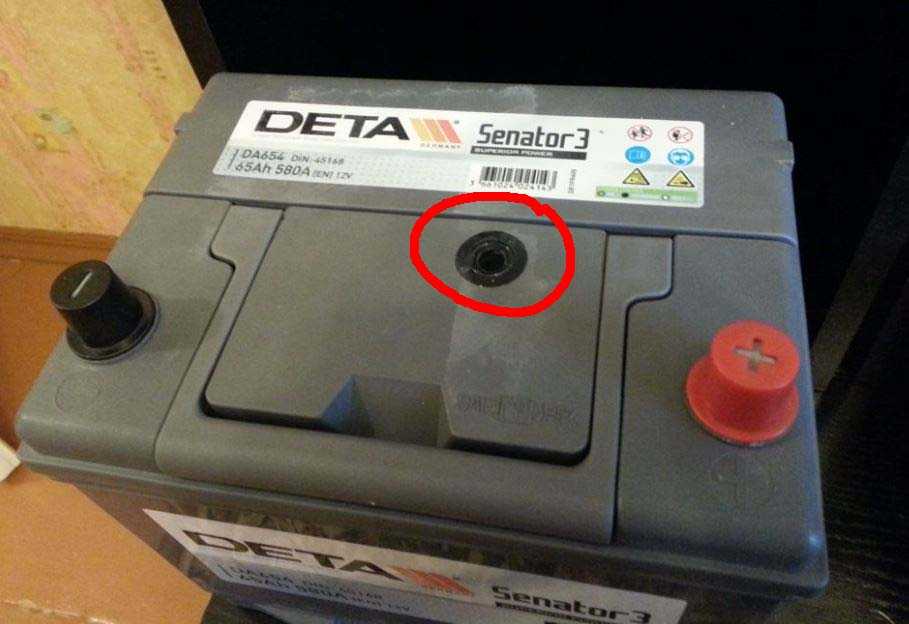
Currently, a variety of models of maintenance-free car batteries are becoming very popular. They are increasingly being installed on passenger cars of various brands.
They are very easy to operate and do not require much attention from the driver. It is enough to recharge them periodically, since all sealed, maintenance-free batteries are afraid of deep discharges.
However, a standard charger is not suitable for charging them. How to charge them, you ask?
For maintenance-free car batteries, the constant voltage charging method is most suitable.
When a specific voltage value is set on the charger, the current gradually changes and is automatically adjusted from a higher value to a smaller one.
The current in this case will change under the influence of the laws of electrical engineering - as the voltage on the battery increases, the current will begin to fall, and when equality of voltages on the battery and charger is achieved, the current will drop to zero.
It is on the basis of this method that most automatic chargers work. There is no need to monitor the process, since once the battery is fully charged, the process automatically ends.
But this method also has one drawback: charging will take a lot of time - about 20-24 hours. Although even this time may not be enough if you set the charging voltage too low.
For example, at a voltage of 14.4 Volts, a car battery will charge only 80% per day, at a voltage of 15 Volts - by 90%, and at 16 Volts - by 95 - 97%.
Full charge can be achieved at a voltage of about 16.3 - 16.4 Volts.
This recharging method is more gentle; it does not lead to the active release of gases, therefore it is optimal for maintenance-free batteries (gel and AGM). It is this charging option that allows the car owner to keep the battery in working condition quite simply and without unnecessary hassle.
Charging device
How to properly charge a maintenance-free car battery
Automakers are trying to ensure that interference in the design of the car and its individual components and assemblies on the part of car owners is minimal. Thanks to this philosophy, modern automotive repair often comes down to simply replacing one block or module with another.
The electrical system was no exception. After all, most batteries in a car are maintenance-free. However, despite this fact, it is possible to independently charge a maintenance-free car battery at home.
Features of car battery designs
In addition to the fact that rechargeable batteries can be divided into maintenance-free and maintenance-free, they can also be classified according to the type of electrolyte. This component of any modern car battery is available in three types:
- with liquid electrolyte in jars based on acid and distilled water (classic version);
- with a gel base (quite expensive, but more durable and resistant to charge/discharge fluctuations);
- the electrolyte is absorbed into a non-woven polypropylene base (a less common, but more progressive type of battery).
All maintenance-free car batteries do not have access to their internal structure. This condition imposes restrictions on manipulations with the battery, so any manipulations can only be carried out with electrical parameters.
Preparatory activities
Before you can properly charge a maintenance-free car battery, you need to determine the conditions under which this will occur. There are two options:
- The battery will be removed from the vehicle and moved to the power source;
- The charger wires will be connected to the battery terminals to carry out the procedure without disconnecting from consumers in the car.
In both cases there are negative and positive sides:
- The first option carries #171;plus#187; The point is that you can take the battery out of the garage and control the charging process, which is carried out under normal temperature conditions. However, most likely, all electronic settings in the car will be reset and will need to be reinstalled.
- The second option is convenient because you don’t need to carry a heavy battery from the garage and back, there will be no reset from shutting down. If there are voltage fluctuations or an incorrectly configured charger, electrical consumers in the car may fail, which will lead to expensive repairs or replacement.
Battery charger
Although this type of battery is usually called “maintenance-free,” this does not mean that they absolutely do not require maintenance and proper operation. After all, the charging process occurs while the engine is running. And the issue of maintenance concerns manipulations with the internal chemical processes of the electrolyte.
The process of charging a car battery
There are several options for charging the battery:
Each of them will lead to a full charge of the battery . The difference between them is the voltage or current level. In some cases the voltage is kept constant, and in others the current is kept constant.
Charging the battery without removing it from the car
To monitor the current vehicle charge level, universal voltmeters or multimeters are used. There are special automotive instruments for measuring voltage. They are inserted into the cigarette lighter socket. Their digital display monitors real-time data with an accuracy of 0.01 V from the battery terminals.
Charging a twelve-volt car battery is carried out using a voltage in the range of 16-16.5 V. It is advisable to start the charging process with a clean battery; it is better to clean the terminals from the oxide film for better contact with the “crocodiles” of the charger. Also, when connecting the charger, there should be no cracks or obvious signs of leaks on the battery.
The time required for a full charge can be calculated based on the declared capacity of the battery and the current output from the charger. For example, to completely restore a battery with a capacity of 55 Ah with a charger delivering 5.5 A, it will take 10 hours. You need to check the charge level with a voltmeter. A fully charged battery should show 12.6 V.
If it is possible to adjust the charging current, then it is preferable to choose a lower level.
Due to this, the service life of the automobile electrical unit is extended. Most chargers limit the current to 15 A. Using the constant voltage method, the maximum possible current is applied when charging begins, which is reduced to 10% of the battery capacity during the process.
Garage battery charging
Every hour with this charging method, the battery voltage at the terminals is monitored. If its level has reached stability and does not change for 1-2 hours, and a slight “boil” begins in the jars, then the process can be completed.
With the combined charging method, a stable current is first supplied, and then the charge is carried out with a stable voltage. The output data is controlled automatically using special chargers. At the end of the process, the power supply switches off automatically.
Does a new battery need to be charged?
A new battery purchased from a car dealer is often installed in the car without additional charging. This can be done if less than 6 months have passed since the battery was manufactured. Otherwise, partial discharge could occur.
You can always charge a new purchased battery yourself. However, you should not subject it to an intensive process with high current. During charging, you will need to follow the safety rules for working with batteries, because harmful gases are released.
Safety rules for self-charging batteries
At home or in the garage, charging your car battery should be done in a well-ventilated area. This is due to the release of hydrogen and oxygen gas mixtures. Smoking, sparking or open flames are not allowed near the charging area.
When cleaning the battery from dirt, do not use rags made of artificial materials to prevent static electricity from accumulating. When the electrolyte “boils,” you need to stop the charging process.
Interesting on the topic:
Charging maintenance-free batteries. Basic moments
Currently, there are three types of batteries used to start engines of cars and trucks: maintenance-free, low-maintenance and maintenance-free. Maintenance-free batteries are the most popular.
The reason is simple - after purchasing and installing a battery, there is no need to maintain a certain electrolyte level. It is simply impossible to add electrolyte to a maintenance-free battery. Such batteries can be divided into three groups.
The first group is conventional devices with liquid electrolyte. The only difference from conventional batteries #8212; they have the plugs sealed or removed from their body altogether.
The second group is those power sources that do not have liquid electrolyte inside, since it is already absorbed into non-woven polypropylene. The third group is gel.
In these batteries, silicon oxide powder is pre-impregnated with liquid electrolyte, resulting in a white gel mass that fills the entire inside of the battery.
How to charge a maintenance-free battery correctly
After long use, the battery discharges and quite naturally, there is a need to charge it, despite its maintenance-free status. Note that the battery can be charged in two modes. Which charging mode should be used can be determined by the density of the electrolyte, transparency and voltage at the battery terminals.
First mode #8212; this is when a partial discharge has occurred, and the second is a complete discharge. In the first case, you need a charger that produces continuous voltage. After connecting it to the battery, it should be set to a voltage of 13.9 -14.9 volts at a current of 25 amps. The battery will be fully charged in approximately three hours.
In the second case, charging will take much longer, about one day. This process should occur using a current that is one tenth of that indicated directly on the battery. The charging process must be supervised.
When active gas evolution begins on its plates, the battery is charged! If the charging process is not stopped, then a simple conversion of the electrolyte into gas will occur. If there are no holes in the device body, an explosion may occur.
At the end of charging a maintenance-free battery, you need to check the voltage at its terminals. Normal voltage is 12 volts!
More reviews on the topic Batteries
Rechargeable batteries are electrochemical sources of autonomous electrical power and are widely used in various technical devices from cameras and phones to cars.
For autonomous reliable operation of an electrical device, you must be completely sure that the battery is ready so that it does not run out at the wrong time. Undercharging or connecting to the network for too long can lead to rapid failure.
It is important for every motorist to ensure that the battery is always in working condition. The battery is very important. If the battery is faulty, it will be impossible to start the car.
Sources: http://zaryad.com.ua/category/24813_kak-pravilno-zarjadit-neobsluzhivaemyj-avtomobilnyj-akkumuljator/, http://ktonaavto.ru/remont-i-obsluzhivanie/elektrooborudovanie/kak-pravilno-zaryadit-neobsluzhivaemyj -avtomobilnyj-akkumulyator.html, http://batarei.biz/zaryadka-akkumulyatora.html
No comments yet!
Source: http://www.kak-sdelatpravilno.ru/kak-pravilno-zarjadit/kak-pravilno-zarjadit-neobsluzhivaemyj.html


